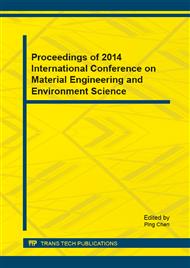p.454
p.460
p.465
p.470
p.475
p.482
p.486
p.490
p.497
Effect of Fly Ash on LifeCycle CO2 Assessment of Concrete Structure
Abstract:
The objective of the present study is to ascertain the effect of fly ash (FA) on the lifecycle CO2 assessment of reinforced concrete structures. The reliable lifecycle CO2 assessment approach of concrete structures were established and then specified using the developed CO2 a performance evaluation table. The system boundary studied was from cradle to recycling of concrete, which includes material system, concrete production, transportation, construction, use and recycling activity phases. The assumed time and regional boundaries for concrete mixes were 2012 and Seoul, South Korea, respectively. The carbonation depth of concrete and CO2 uptake during use of structure and recycling phases were calculated based on the Yang et al.’s model. Using the performance evaluation table, the effect of FA on the lifecycle CO2 assessment of concrete columns and beams in an office building was examined under the different concrete strengths. The parametric study clearly showed that high-strength concrete is favorable to the reduction of lifecycle CO2 amount of concrete columns, whereas the reduction is not expected for concrete beams. The lifecycle CO2 amount of concrete structures decreases with the increase in the substitution level of FA up to 20%, beyond which the decreasing rate is insignificant.
Info:
Periodical:
Pages:
475-481
Citation:
Online since:
November 2014
Authors:
Price:
Сopyright:
© 2014 Trans Tech Publications Ltd. All Rights Reserved
Share:
Citation:


